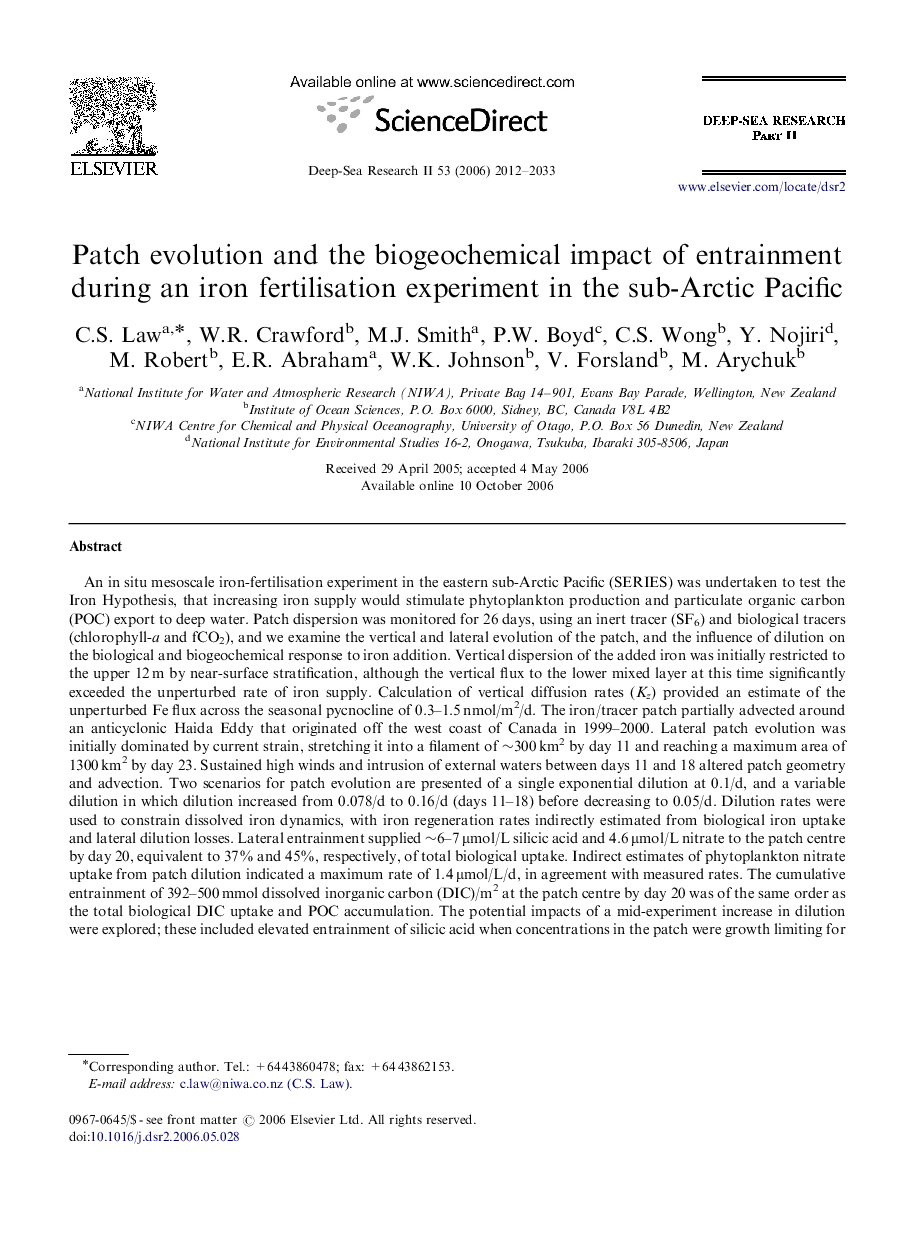| کد مقاله | کد نشریه | سال انتشار | مقاله انگلیسی | نسخه تمام متن |
|---|---|---|---|---|
| 4538345 | 1626512 | 2012 | 22 صفحه PDF | دانلود رایگان |

An in situ mesoscale iron-fertilisation experiment in the eastern sub-Arctic Pacific (SERIES) was undertaken to test the Iron Hypothesis, that increasing iron supply would stimulate phytoplankton production and particulate organic carbon (POC) export to deep water. Patch dispersion was monitored for 26 days, using an inert tracer (SF6) and biological tracers (chlorophyll-a and fCO2), and we examine the vertical and lateral evolution of the patch, and the influence of dilution on the biological and biogeochemical response to iron addition. Vertical dispersion of the added iron was initially restricted to the upper 12 m by near-surface stratification, although the vertical flux to the lower mixed layer at this time significantly exceeded the unperturbed rate of iron supply. Calculation of vertical diffusion rates (Kz) provided an estimate of the unperturbed Fe flux across the seasonal pycnocline of 0.3–1.5 nmol/m2/d. The iron/tracer patch partially advected around an anticyclonic Haida Eddy that originated off the west coast of Canada in 1999–2000. Lateral patch evolution was initially dominated by current strain, stretching it into a filament of ∼300 km2 by day 11 and reaching a maximum area of 1300 km2 by day 23. Sustained high winds and intrusion of external waters between days 11 and 18 altered patch geometry and advection. Two scenarios for patch evolution are presented of a single exponential dilution at 0.1/d, and a variable dilution in which dilution increased from 0.078/d to 0.16/d (days 11–18) before decreasing to 0.05/d. Dilution rates were used to constrain dissolved iron dynamics, with iron regeneration rates indirectly estimated from biological iron uptake and lateral dilution losses. Lateral entrainment supplied ∼6–7 μmol/L silicic acid and 4.6 μmol/L nitrate to the patch centre by day 20, equivalent to 37% and 45%, respectively, of total biological uptake. Indirect estimates of phytoplankton nitrate uptake from patch dilution indicated a maximum rate of 1.4 μmol/L/d, in agreement with measured rates. The cumulative entrainment of 392–500 mmol dissolved inorganic carbon (DIC)/m2 at the patch centre by day 20 was of the same order as the total biological DIC uptake and POC accumulation. The potential impacts of a mid-experiment increase in dilution were explored; these included elevated entrainment of silicic acid when concentrations in the patch were growth limiting for phytoplankton, and decreased cell aggregation. Both factors could potentially have delayed the onset of bloom termination and export, and increased the longevity of the SERIES phytoplankton bloom.
Journal: Deep Sea Research Part II: Topical Studies in Oceanography - Volume 53, Issues 20–22, October–November 2006, Pages 2012–2033